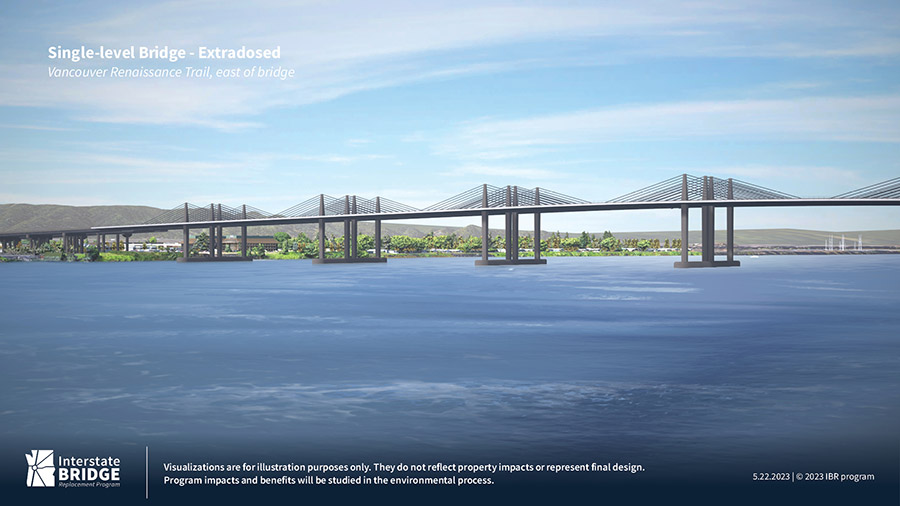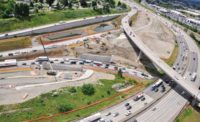After decades of delays and setbacks, the effort to build a new Interstate 5 Bridge spanning the Columbia River between Oregon and Washington may be back on track.
Construction on the new bridge is expected to commence as early as 2025, thanks to recent funding commitments from both states. The Oregon legislature has allocated $1 billion towards the $6 billion project, matching the $1 billion previously committed by Washington legislators in 2022.
With a total of $2 billion secured, the Interstate Bridge Replacement Program (IBR) is now positioned to apply for up to $3 billion in federal grants, with the remaining funding anticipated to come from tolling, amounting to around $1.2 billion.
According to Greg Johnson, program administrator for the IBR program, the Oregon vote "has put us in a much more competitive situation to put those federal grant applications in by showing the region is committed to getting this done."
With $2 billion committed from the states, the bridge program aims to land megaproject and bridge funding from both the Federal Transit Administration and the Federal Highway Administration.
"These grants are very competitive," Johnson says. "We have to be very sharp. We think we are well positioned. Our project is one of the very few megaprojects that has a lot of everything in it. We have transit, bike and ped, we have highway. We are a truly multi-modal corridor."
With I-5 the only interstate that connects Mexico and Canada on the West Coast, it is also linked to some of the world's largest ports that dump freight traffic on the freeway. "This project has a local flavor, but is also of national and international significance," Johnson says.

Visualizations of the various types of bridges that could be constructed were recently revealed.
Rendering courtesy Interstate Bridge Replacement Program
Currently two nearly identical side-by-side lift spans cross the river. The first was constructed largely for horse-and-buggy traffic in 1917. The second opened in 1958, paid for by eight years of tolls. Over the past several decades, the increasing traffic demands on the outdated structure has prompted legislators from both states to fund a replacement.
A major two-state effort to replace the bridge, known as the Columbia River Crossing project, ran from 2005 until 2013. Following years of contention around design, transit inclusion and budget, the project collapsed when the Washington State Senate chose to end funding for the project.
Six years later, the states' two governors signed a bi-state Memorandum of Intent to restart work on the Interstate Bridge. The November 2019 agreement led to the formation of the IBR program to complete the planning, design and construction work for the bridge. The program is led jointly by the Oregon and Washington state departments of transportation in coordination with eight other bi-state partner agencies.
"Two states, two ports, two transit agencies, two cities, two metropolitan planning organizations all have a decision-making role on this project," Kris Strickler, Oregon Dept. of Transportation director, says in a video. "It is difficult to get folks with such diverse viewpoints to agree on anything, let alone a project of this size, but we have been working on this for a while and we all agree that it's time to replace this bridge."
With design about 10% done, the team is sorting through options as they work through the environmental process. Once started, construction is expected to last between five and seven years.
Along with two key grant applications in summer 2023, the team is working through the National Environmental Policy Act process. Johnson says the last project received a federal record of decision, so this project will build upon that, and they hope to publish a draft supplemental environmental impact statement by the end of 2023 and achieve an amended record of decision by the end of 2024.
"We have some great momentum, and the region has come together to say we are dedicated to get this thing across the finish line this time," Johnson says.






Post a comment to this article
Report Abusive Comment